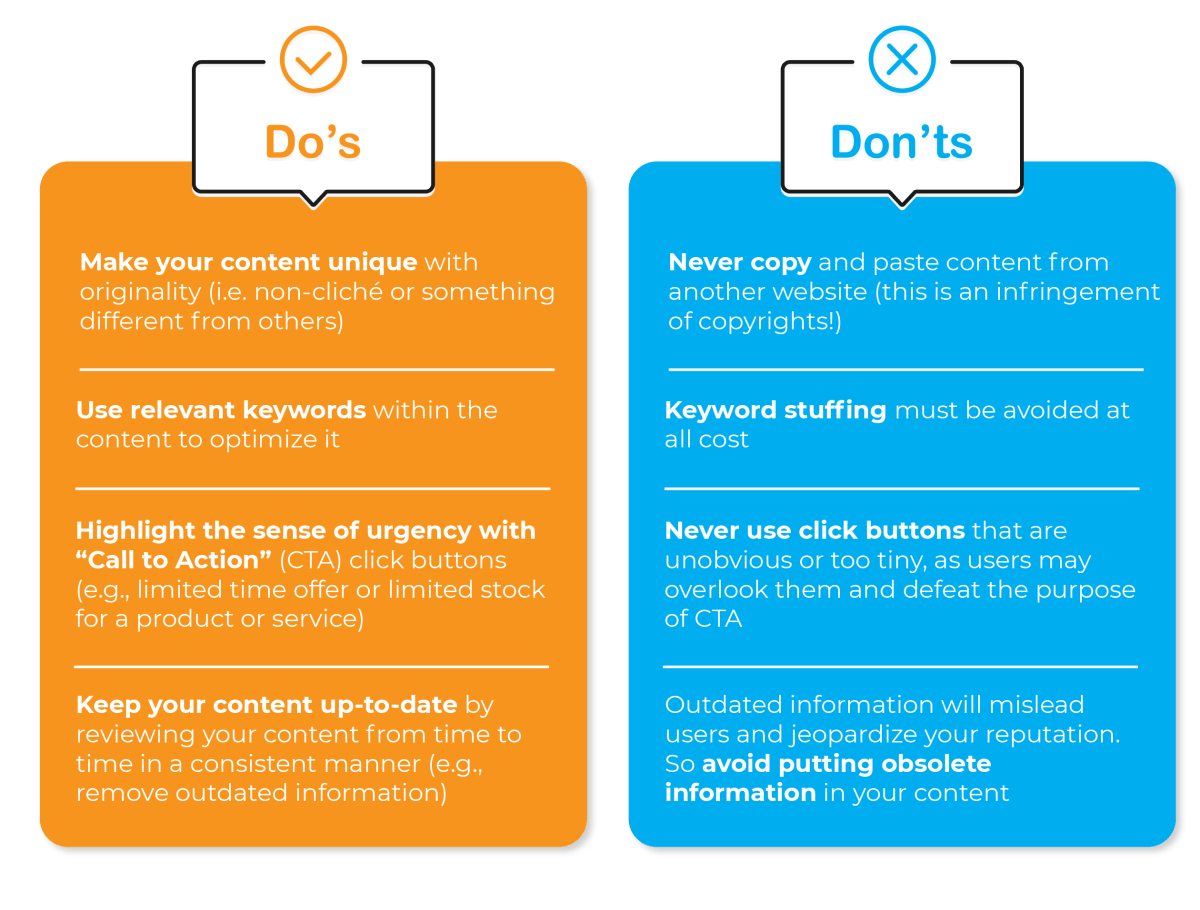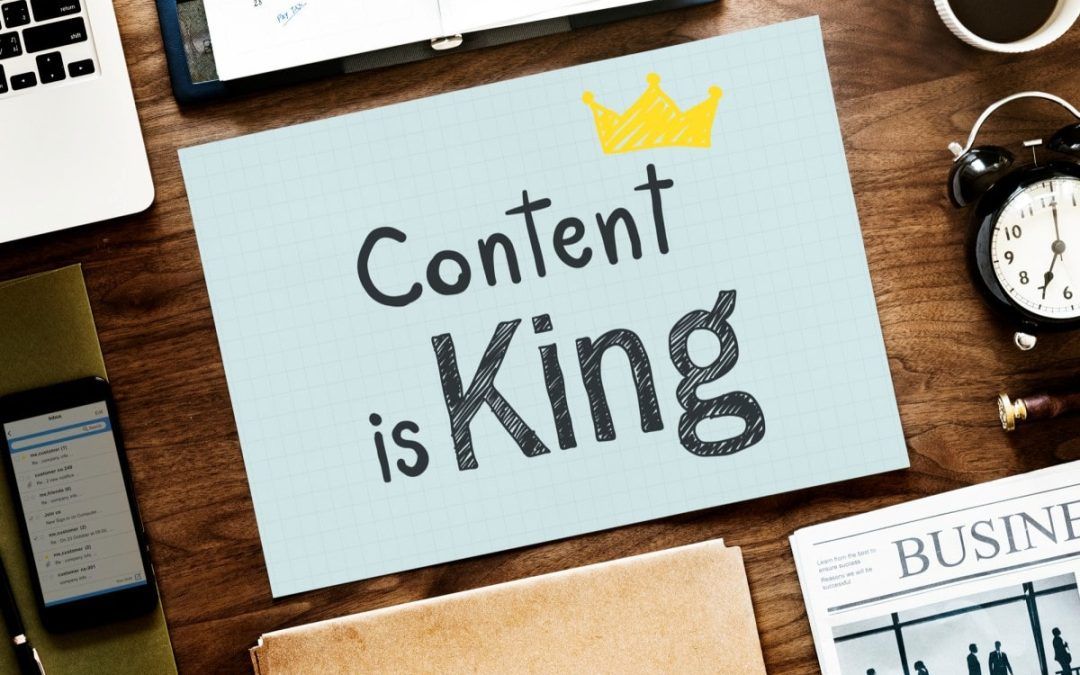According to some of the most recent findings, websites ranked 1st organically provide the most helpful information, and quality content can help you increase your click-through rate by 400%. From these statistics, 61% of buying decisions are influenced by the content they have engaged with, while 75% of internet users expect to have their issues solved within 5 minutes. This indicates that creating “human first” content is our top priority.
So what is the most crucial success factor that drives traffic to your website and ranks top of the page on Google search? Creating quality SEO Content is the key to making your website rank top of Google searches! Now that you know the significance of creating quality content to boost your search rate, let’s take a closer look at the types of website content you can create and the success factors that boost your SEO content.
6 Types of Website Content That You Can Create
- Blog Articles: Blog writing is one of the easiest ways to present content. You can create blog articles with content clusters with pillar pieces that branch out from the clusters to short breaking news and how-to guides where the preferred article length is about 3,000 words or more.
- Videos: From YouTube to Tik Tok, millions of users watch all kinds of video clips daily. This is one of the reasons why video can help boost your SEO content. For each channel, you can optimize it through proper tagging and headlines. In addition, you can also complement your SEO articles, blogs, and pages’ content with videos.
- Case Studies: Content that displays the successes of your business, for instance, testimonials from your product users, good reviews, and ratings about your products or services posted by your customers, can help boost your content too. Sometimes, the success stories of other businesses or well-known people can also be utilised to optimize your content search.
- Page Level: You can furnish the main service or product pages on your website with related information (e.g. features, benefits, advantages, etc.) to help users or your customers find the information they need.
- White Papers (a.k.a. How-to Guide): Simply put, white papers refer to “How-to” guides that provide solutions with statistics and data on how to solve a particular issue, for example, “How to Create the Best SEO Content” or “Best Strategies to Drive Traffic to Your Website!”.
- Infographics: To make it easier for you to understand, like what its name suggests, “Info” refers to the key information while “Graphics” refers to appealing visual aid that explains the value of something, which can be images, graphs, charts, etc. However, note that infographics are not crawlable, so always use the optimal Alt Text when uploading infographics. Pairing infographics with a fully optimized written piece of content, such as a blog article or “How-to” article, would boost the impact exponentially.
The Do’s and Don’ts’ to Create the Best Content
Apart from being grammatically correct, here are some rules of thumb that you need to follow when creating your SEO content:

Create Content that Withstands the Test of Time!
Creating content with topics that withstand the test of time is one of the ways to keep your content relevant at all times, whether in the present day or many years in the future. For example, writing a success story of a successful business tycoon, or self-help motivational topics, will always be relevant. The business tycoon’s success story remains accurate and relevant regardless of how many years go by. The same goes for self-help motivational topics. It doesn’t matter how many years pass by, people from all walks of life will face challenges in different phases of their life, and thus, the motivational guide stays relevant.
Use Topic Clusters Strategy
Topic clusters refer to interlinked pages about a particular subject. Despite the various names or terms such as content hubs, pillar pages, topic clusters, hub, and spoke, they refer to one thing — grouped pages based on topics that are created to cover a subject and rank. To help you understand better about the topic cluster, here are three main components you should take note of:
- Your page focuses on a specific topic.
- Your “group” (cluster) of pages that include in-depth explanation about sub-topics branching out from the main subject or main group’s topic.
- Your pages should be interlinked with each other.
Make It “Different”!
Making your content stand out from the thousands or millions of content pieces. So avoid copycat content and create content that sets yours apart from the others. Simply put, create “Non-cliché” content with originality and uniqueness to capture the attention of users to read on.
Remember, links are crucial as they are the ranking factor! You can use these tips to help make the links more effective:
- Original study or research (e.g., surveys, studies, polls)
- Provide a different viewpoint (e.g., the opinions given can be your own or someone in your industry, company, or relevant professionals).
- Expand the ideas of others (e.g., Elaborate on key ideas, go in-depth about a particular topic, more profound, and provide more solutions or options)
Make “Catchy” Content!
Due to the low attention span of most users, you should create “catchy” content that keeps users excited and anticipate reading more with the following tips:
- Always make it simple and easy to understand: Don’t use too much technical jargon or complex and confusing sentences.
- Always make it visual: Break up lengthy content with images (photos) and videos.
- Always speak your users’ language: Use terms and words that resonate with your users.
- Always check your spelling: Too many spelling mistakes lower your content’s quality and affect your authority or reputation. So check your spelling before posting your content!
Don’t wait — Kickstart your SEO content with the above guidelines and tips to boost your website ranking now!

